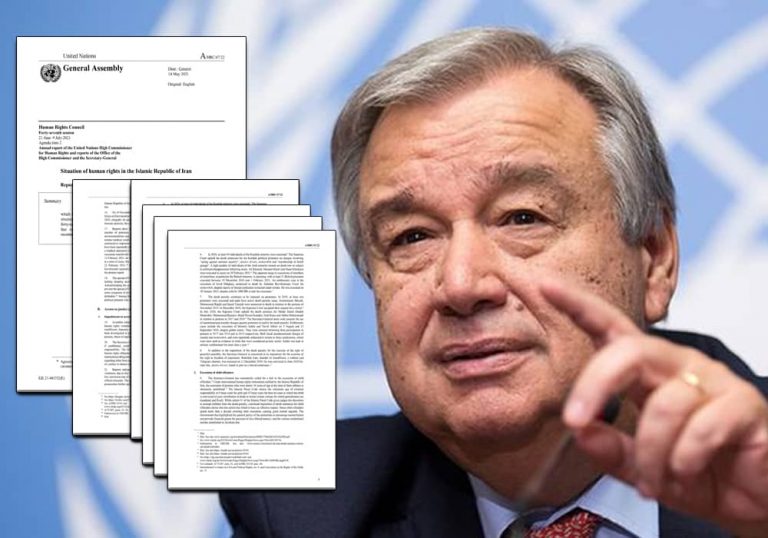
(PMOI / MEK Iran) and (NCRI): UN Secretary-General Antonio Guterres emphasized the continued lack of accountability over the 1988 massacre.
UN Secretary-General Antonio Guterres emphasized the continued lack of accountability over the 1988 massacre of Iranian political prisoners, as well as modern challenges deriving directly from it when giving a report on human rights in Iran to the United Nations General Assembly.
Iran’s biggest pro-democracy opposition group
Although many regime leaders have openly supported the effort to kill Iran’s biggest pro-democracy opposition group, the People’s Mujahedin of Iran (PMOI / MEK Iran), Tehran has never formally acknowledged the scope of the massacre.
In a long-running effort to muddy the waters surrounding this subject, government officials have attempted to remove evidence of hidden mass graves, harassed the families of numerous victims, and criminalized efforts to remember the dead or demand accountability from the massacre’s perpetrators.

(PMOI / MEK Iran) and (NCRI): The Deputy Intelligence Minister at the time, Reza Malek, also gave a specific number, he said 33,700.
The MEK, the primary target of the massacre in 1988
The MEK, which was the primary target of the massacre in 1988, has discovered identical gravesites in at least 36 cities, but neither the UN Human Rights Council nor any other international organization has ever performed an inquiry to confirm, much less build on these findings.
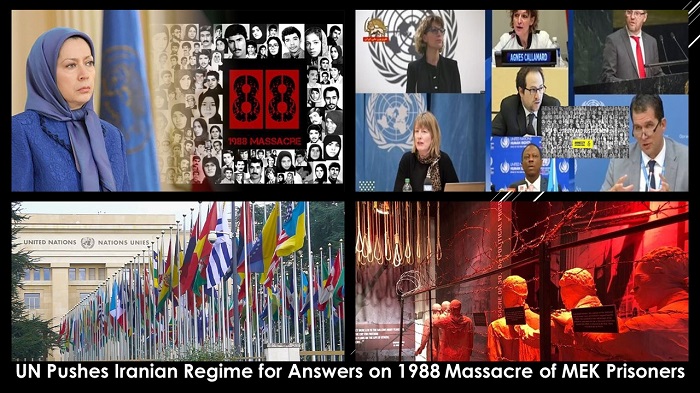
(PMOI / MEK Iran) and (NCRI): U.N. Urged to Investigate 1988 Massacre of Political Prisoners in Iran.
In 1988, Iran’s “death commissions”
In 1988, Iran’s “death commissions” ordered and carried out 30,000 executions over a three-month period. However, several witnesses of the massacre have given higher figures or stressed the uncertainty that stemmed from the fact that many prison wards were completely empty, leaving no one alive to provide an account of what happened there.
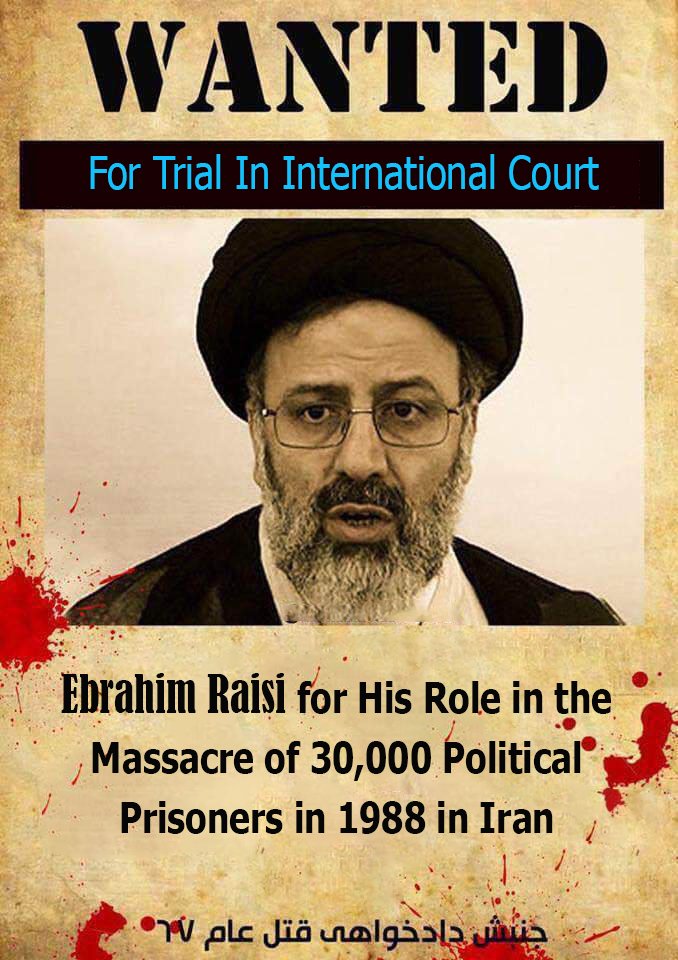
(NCRI) and (PMOI / MEK Iran): Taken from the Social Media, widely used during campaigns upon Raisi’s appointment to the highest Judicial position under the mullahs’ rule.
1,000 former political prisoners
The National Council of Resistance of Iran (NCRI) convened a virtual conference on the atrocity last month, which included over 1,000 former political prisoners, as well as a number of European leaders and specialists in human rights and international law.
The event and its speakers renewed their calls for international action just days before Guterres’ UNGA speech, which increased the case’s international attention once more.
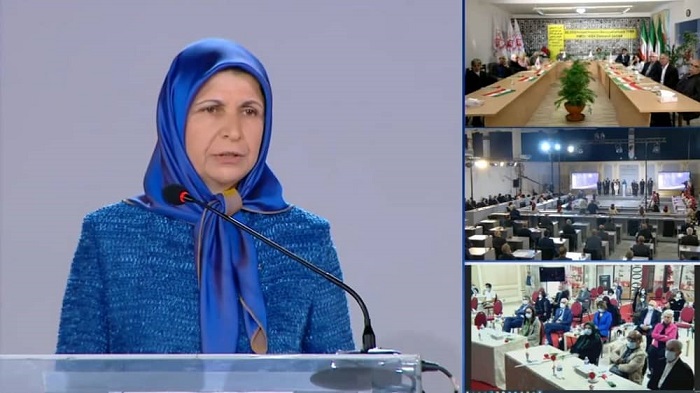
(NCRI) and (PMOI / MEK Iran): Khamenei and Raisi must be tried for the 1988 massacre, for the executions in the 1980s, for the murder of protesters, and for their murderous Covid policy.
Geoffrey Robertson, a British human rights lawyer
The 1988 massacre was labeled a genocide by Eric David of the University of Brussels and Geoffrey Robertson, a British human rights lawyer.
Both individuals emphasized that the massacre met the statutory requirements for genocide in that it was driven by a desire to kill everyone who opposed the theocratic regime because of their belief in a moderate, apolitical form of Islam.

(NCRI) and (PMOI / MEK Iran): There has been a crime committed that engages international responsibility.
Stop ongoing genocide or hold criminals accountable
In his remarks, Robertson referred to the convention as part of an effort to compel the world community to act. He defined it as requiring all countries that have ratified the document to take measures to stop ongoing genocide or hold criminals accountable for those that come to their attention after the fact.
These words highlight the fact that the international community had already failed in its obligation to promote human rights, having been informed of the executions in 1988 but failing to act.
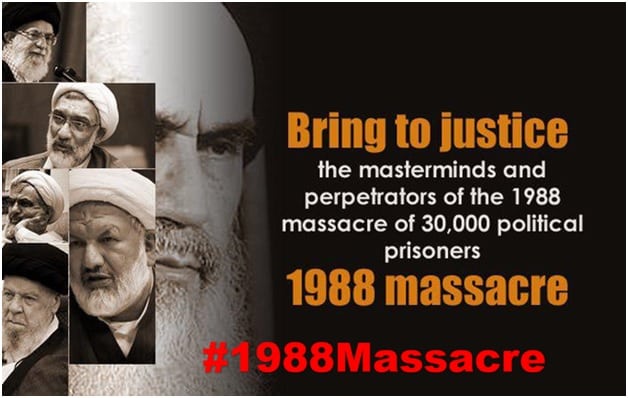
(NCRI) and (PMOI / MEK Iran): Hamid Noury, Iranian Regime Henchman, by Swedish Prosecutor Authority.
Raisi, one of the four officials on the lead execution commission in 1988
As a result of this strategy, Tehran has had no qualms about promoting recognized perpetrators of the 1988 massacre to ever-higher levels within the government, presumably confident that Western powers and the UN would not intervene. When Ebrahim Raisi, one of the four officials on the lead execution commission in 1988, was confirmed as the regime’s next president in June, this notion of impunity reached its pinnacle.
Raisi’s elevation to the presidency after serving as the head of the judiciary demonstrates that human rights violators in Iran will never face justice unless it comes from an international court, a democratic nation invoking universal jurisdiction, or a new, democratic government that emerges from the overthrow of the mullahs.

(NCRI) and (PMOI / MEK Iran): The 1988 Death Commissions were composed of Iran’s current Minister of Justice and were established throughout Iran following a fatwa issued by the Supreme Leader, Khomeini.
MEK Iran (follow us on Twitter and Facebook)
and People’s Mojahedin Organization of Iran – MEK IRAN – YouTube
